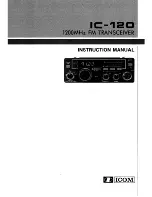
17
CONNECTIONS
PREP
ARA
TION
Some of the speakers commercially available these days
have speaker wire connections that allow bi-wiring or bi-
amplification to enhance the performance of the speaker
system. This unit allows you to make bi-wire and bi-AMP
connections to one speaker system. Check if your speakers
support bi-wiring or bi-amplification. As these speakers
are shipped to you, you will note gold-plated shorting bars
or bridges, one connecting the two red input terminals and
the other connecting the two black input terminals.
Remove these shorting bars or bridges only if you plan to
bi-wire or bi-AMP your speakers.
■
Conventional connection
If you want to connect your speakers as traditional
loudspeakers using the conventional connection method,
connect your speakers using the regular left and right
speaker wire connections and ignore the second set of
terminals.
■
Bi-wire connection
The bi-wire connection separates the woofer from the
combined midrange and tweeter section. A bi-wire
compatible speaker has four binding post terminals. These
two sets of terminals allow the speaker to be split into two
independent sections. This split connects the mid and high
frequency drivers to one set of terminals and the low
frequency driver to the other pair.
• Remove the shorting bars or bridges to separate the LPF (low
pass filter) and HPF (high pass filter) crossovers.
• To use the bi-wire connections, press SPEAKERS A on the
front panel so that SP A lights up in the front panel display.
■
Bi-AMP connection
The bi-AMP connection uses two amplifiers for both
speakers. One amplifier is connected to the woofer section
of a loudspeaker while the other is connected to the
combined mid and tweeter section. With this arrangement
each amplifier operates over a restricted frequency range.
This restricted range presents each amplifier with a much
simpler job and each amplifier is less likely to influence
the sound in some way. The internal crossover of the
speaker consists of a LPF (low pass filter) and a HPF (high
pass filter). As its name implies, the LPF passes
frequencies below a cutoff and rejects frequencies above
the cutoff frequency. Likewise, the HPF passes
frequencies above its cutoff.
• Remove the shorting bars or bridges to separate the LPF (low
pass filter) and HPF (high pass filter) crossovers.
• To activate the bi-AMP connections, set BI-AMP to ON in
ADVANCED SETUP (see page 89).
• To make the bi-AMP connections, use the FRONT and
SURROUND BACK terminals as shown below.
Using bi-wire and bi-AMP
connections
Notes
FRONT
R
L
+
–
+
–
+
+
–
–
A
B
This unit
Shorting bars
or bridges
Shorting bars
or bridges
Notes
FRONT
R
L
+
–
+
–
+
+
–
–
A
B
This unit
FRONT
R
L
A
SINGLE
+
–
+
–
SURROUND BACK
R
L
+
–
+
–
This unit
















































